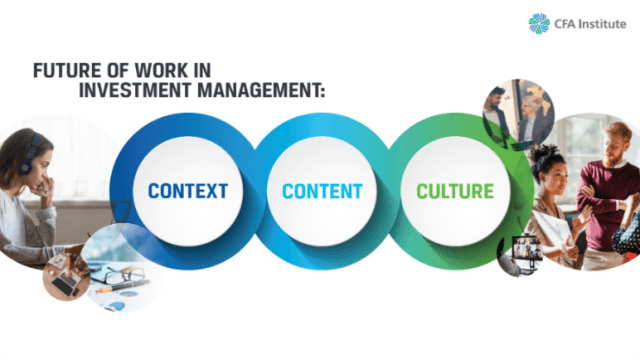[ad_1]
Stronger women-in-leadership (WIL) metrics have well-documented benefits, yet companies have failed to truly accelerate their gender diversity efforts.
Women make up 44.7% of S&P 500 employees and 36.9% of first- and mid-level managers, but as 2019 came to a close, they accounted for only 5.8% of S&P CEOs and only 21.2% of board seats, less than in 2017.
At top firms, WIL headway has been hard to find, with the recent departures of several women CEOs creating a further decline in the total percentage.
FTSE 350 companies achieved 30% female board membership last year, a milestone set by the 30% Club in 2010. Still women make up only 20% of FTSE 350 executive committees and remain underrepresented in both the C-suite and at the CEO level.
What explains this lack of progress? Entrenched biases and early career dynamics drive persistent differences in the career paths of equally qualified men and women, a recent Wall Street Journal report found.
How does this play out in practice? More than 300 Russell 3000 companies appointed new CEOs last year. Only 26 were women. And 17 women left their CEO roles during the same period.
Meanwhile, companies are failing to deepen the pool of potential women board candidates, an MSCI study found. Of the female directors from MSCI ACWI Index firms, 22% serve on three or more boards, compared to only 12% of male directors. Growth in the ranks of women directors among the 3,000-member ACWI Index has been fitful as well, increasing from 17.3% in 2017 to 20% at year-end 2019.
Updates on Gender Lens Research
So just how does gender diversity impact stock prices?
Drawing a collective sigh from gender lens analysts, a Harvard Business Review examination of gender diversity and stock prices at more than 1600 public companies found that shares declined for two years after a woman was appointed to the board.
The main reason for the temporary price dip? Investor bias, the researchers found. To anyone familiar with the stubbornness of WIL data, that hardly counts as news.
In response to the study, Sallie Krawcheck pointed out the importance of longer-term results and observed that share price is not the only way to measure the benefits of diversity.
Indeed, gender-diverse companies outperformed their regional benchmarks over the last eight years, according to internal findings from Morgan Stanley, particularly in North America and ex-Japan Asia.
And when it comes to CFOs, an S&P Global Market Intelligence report found that firms that appoint a woman to the position generate increased profits and share price returns in her first two years than they did under her male predecessor.
A summary of the latest academic literature on gender diversity from the Investment and Wealth Institute (IWI) also highlighted some compelling analysis. One study of 1,000 companies in 12 countries found that those with better WIL metrics scored better on profitability and value creation. Another demonstrated that S&P 500 companies with more leadership diversity had higher ROE. Among the other data points: FTSE 100 companies with more women on their boards had higher firm value, and Chinese firms with female chairs outperformed between 2000 and 2014.
The IWI literature review also demonstrated WIL’s advantage on a broader scale, noting gender diversity’s contributions to macroeconomic, sustainability, and innovation benefits, and its risk-mitigating effect on discrimination-related legal costs.
The Outlook for Gender Lens Equity Funds
How can the gender lens investment philosophy extend beyond WIL metrics? From their current large-cap, developed-market composition, gender lens funds could expand into smaller-caps and developing markets. Emerging markets have low allocations in gender lens funds, so have significant growth potential.
Indeed, there are considerable reserves of WIL strength in certain developing markets. The top listed companies in Kenya had more women CEOs than the FTSE 100, for example, and their diversity scores were on par with their listed US and Canadian counterparts, according to Equileap data.
Pay parity could be another area of increased gender lens focus. While the United Kingdom has set the tone, a pay gap persists there despite progress due to new gender-based pay disclosure requirements for companies with more than 250 employees.
A push for disclosure of gender wage data should uncover investment opportunities as the impact of better pay parity scores is assessed.
Finally, women-led start-ups are perhaps the most obvious outlet for the gender lens philosophy. Venture capital (VC)’s underinvestment in women entrepreneurs and the VC world’s cultural barriers are hardly new phenomena, though the toll they exact is coming into sharper detail. Addressing the gender entrepreneurship gap could increase global GDP by 3% to 6%. Though studies show that start-ups founded by women generate higher revenue, the current level of funding remains discouragingly low.
Dedicating more capital to women entrepreneurs could help grow a pipeline of women-led companies with the potential to go public. That may be the next frontier for gender lens equity funds.
If you liked this post, don’t forget to subscribe to the Enterprising Investor.
All posts are the opinion of the author. As such, they should not be construed as investment advice, nor do the opinions expressed necessarily reflect the views of CFA Institute or the author’s employer.
Image credit: ©Getty Images / Guido Mieth
Professional Learning for CFA Institute Members
CFA Institute members are empowered to self-determine and self-report professional learning (PL) credits earned, including content on Enterprising Investor. Members can record credits easily using their online PL tracker.
[ad_2]
Image and article originally from blogs.cfainstitute.org. Read the original article here.





